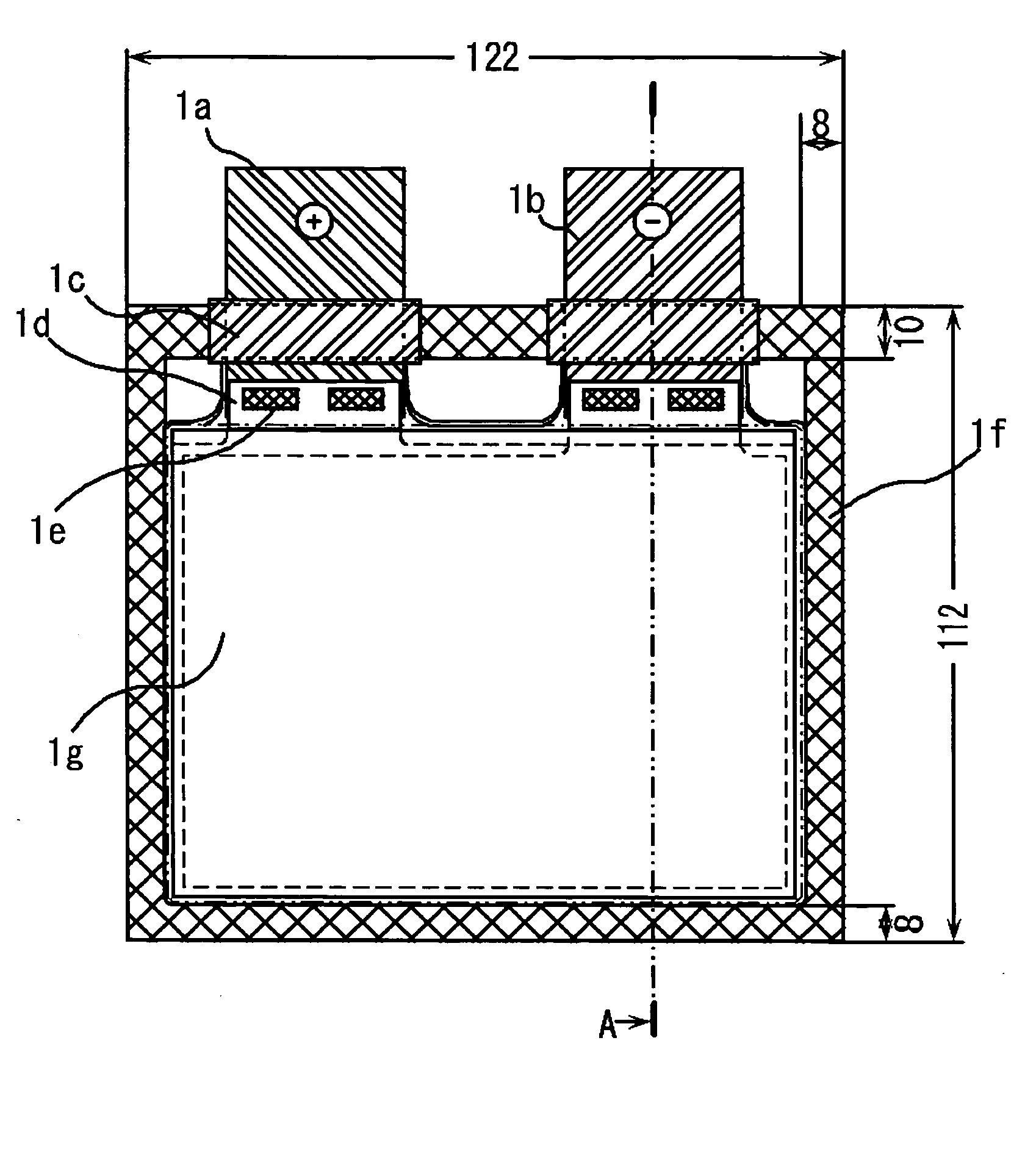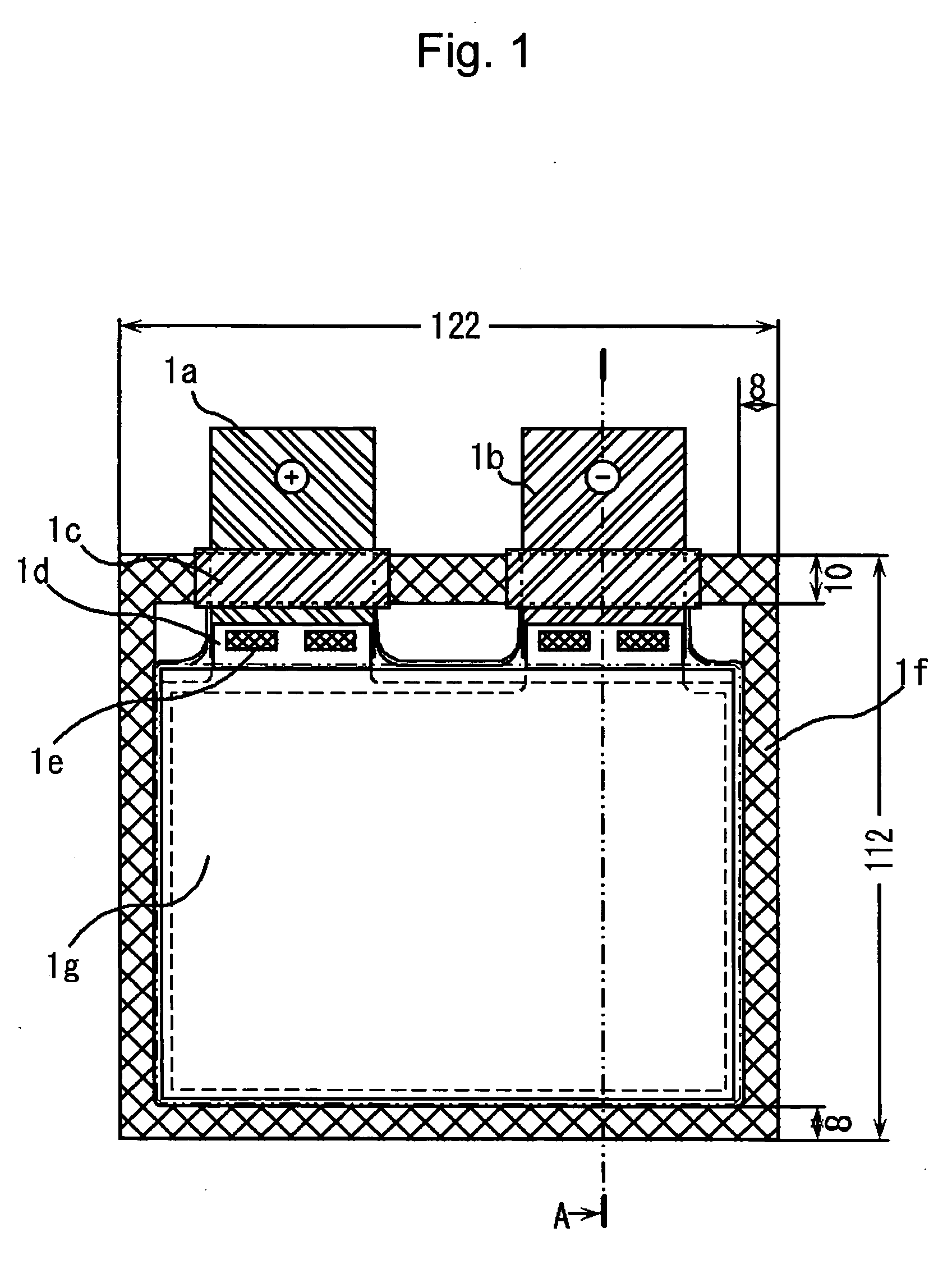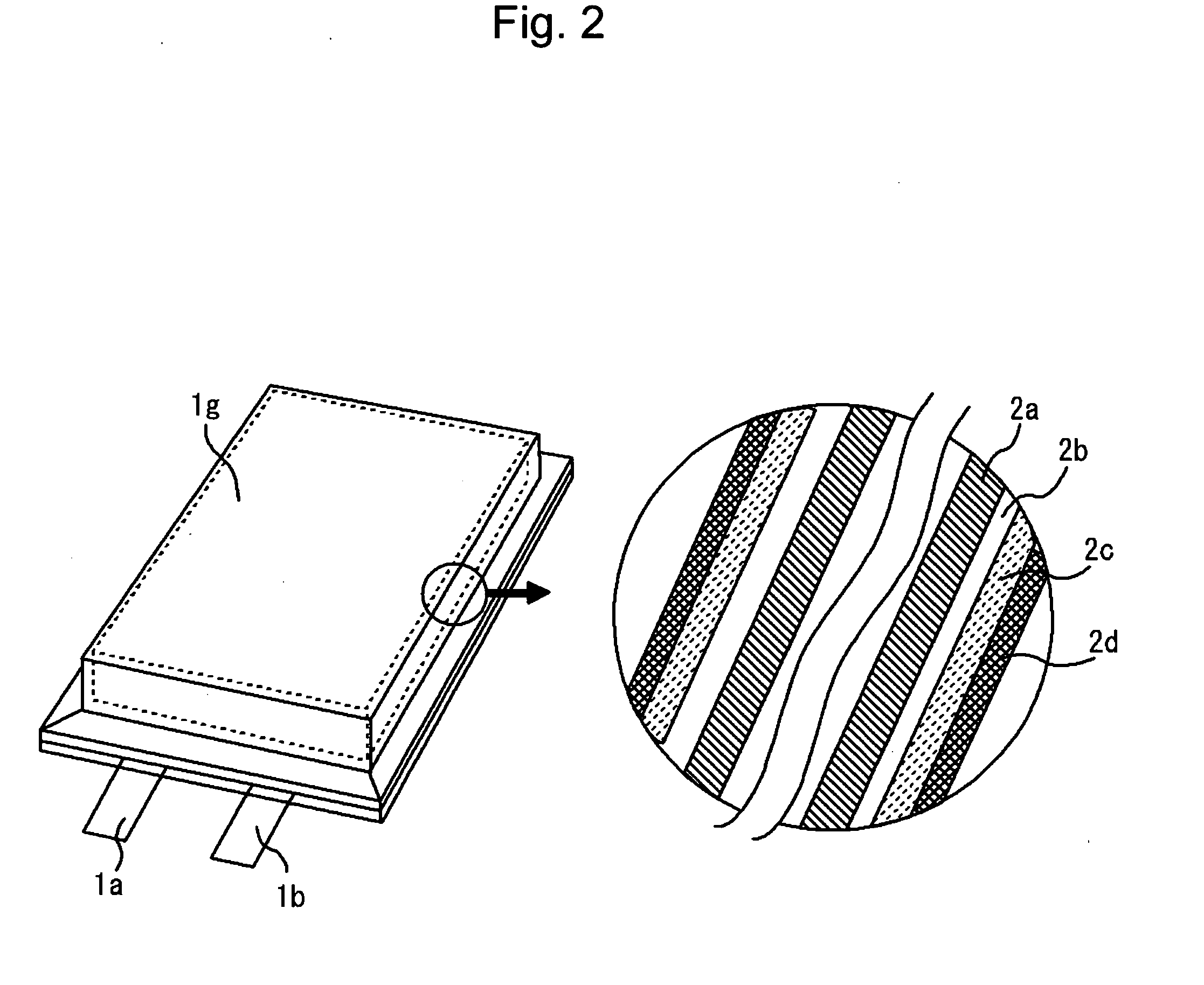Nonaqueous secondary cell
a secondary cell, non-aqueous technology, applied in the direction of secondary cell servicing/maintenance, non-aqueous electrolyte cells, cell components, etc., can solve the problems of low cobalt reserve, poor durability compared to the layered type, and safety, and achieve superior cycle properties, reduce the deterioration of the positive electrode active material mixture, and be suitable for application
- Summary
- Abstract
- Description
- Claims
- Application Information
AI Technical Summary
Benefits of technology
Problems solved by technology
Method used
Image
Examples
example 1
[0034] Example 1 includes a nonaqueous secondary cell, which comprises an electrode group wherein a positive and negative electrode sheets are formed intermediated by a separator and a nonaqueous electrolyte, a laminate type armour case for accommodating the electrode group, and a positive and negative electrode leads connected respectively to the positive and negative electrode sheets; wherein a positive electrode active material used for the positive electrode that is formed on the positive electrode sheet comprises a spinel type and layered type lithium manganese oxides; and the nonaqueous electrolyte comprises a boron-containing lithium compound other than LiBF4 such as 1,3-dioxolan borate-4,5-dione in a nonaqueous solution obtained by dissolving a lithium salt in a carbonate nonaqueous solvent.
[0035] The positive and negative electrodes are capable of occluding and releasing lithium, and constitute a nonaqueous secondary cell via an electrolyte.
[0036]FIG. 1 shows the plan vie...
experimental example 1
[0040] As shown in Table 1, Li1.02Mn1.98A10.02O4 having an average grain diameter of 10 μm and a specific surface area of 1.5 m2 / g as the spinel type lithium manganese oxide, Li1.02Ni0.3Co0.3Mn0.3Mg0.01O2 having an average grain diameter of 8 μm and a specific surface area of 1.7 m2 / g as the layered type lithium manganese oxide, and acetylene black powder as conductive material, were subjected to dry blending. Polyvinylidene fluoride (PVDF) dissolved in N-methyl-2-pyrrolidone (NMP) was homogeneously dispersed in the mixture obtained to produce a paste. This paste was applied to both sides of an aluminum foil with a thickness of 20 μm, dried, and then pressed to a thickness of 120 μm to produce the positive electrode sheet. The solid content weight ratio within the positive electrode was spinel type lithium manganese oxide:layered type lithium manganese oxide:acetylene black:PVDF=80.8:4.2:10.8:4.3 (spinel type lithium manganese oxide:layered type lithium manganese oxide=95:5). FIG. 3...
experimental example 2
[0047] A laminate type cell was produced exactly as in Experimental Example 1, except that Li1.04Mn1.90Al0.10O4 having an average grain diameter of 10 μm and a specific surface area of 1.5 m2 / g was used as the spinel type lithium manganese oxide, Li1.02Ni0.3Co0.3Mn0.4O2 having an average grain diameter of 8 μm and a specific surface area of 1.7 m2 / g was used as the layered type lithium manganese oxide, the solid content weight ratio within the positive electrode was spinel type lithium manganese oxide:layered type lithium manganese oxide acetylene black:PVDF=51.0:34.0:10.8:4.3 (spinel type lithium manganese oxide layered type lithium manganese oxide=60:40), and 1 wt % of the boron lithium compound having a structure as shown in Formula (1) was added to the carbonate solvent mixture, after which charge and discharge was carried out. Boron lithium compound is hereinafter referred to as lithium compound.
PUM
 Login to View More
Login to View More Abstract
Description
Claims
Application Information
 Login to View More
Login to View More - R&D
- Intellectual Property
- Life Sciences
- Materials
- Tech Scout
- Unparalleled Data Quality
- Higher Quality Content
- 60% Fewer Hallucinations
Browse by: Latest US Patents, China's latest patents, Technical Efficacy Thesaurus, Application Domain, Technology Topic, Popular Technical Reports.
© 2025 PatSnap. All rights reserved.Legal|Privacy policy|Modern Slavery Act Transparency Statement|Sitemap|About US| Contact US: help@patsnap.com



